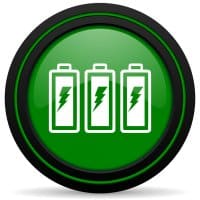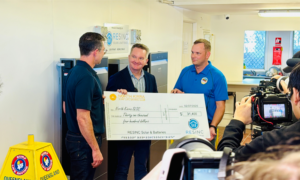At 94, the co-inventor of the lithium-ion battery is still at the forefront of the energy storage revolution; leading a team that has developed a new battery technology promising better performance.
Lithium-ion batteries were invented in the 1970’s, but the very early devices were particularly unstable. In 1980, John Goodenough improved the design with a cobalt-oxide cathode; making them safer and suitable for general use. He’s reportedly never received a cent of royalties for his efforts, but such is his passion for storage that he has continued on in the field for decades since.
In his latest work, a team of engineers at Cockrell School of Engineering at The University of Texas at Austin led by Professor Goodenough have developed all-solid-state battery cells.
The new battery cells have at least three times as much energy density as current lithium-ion batteries, are noncombustible, fast-charging and have a long cycle life.

“Cost, safety, energy density, rates of charge and discharge and cycle life are critical for battery-driven cars to be more widely adopted. We believe our discovery solves many of the problems that are inherent in today’s batteries,” says Professor Goodenough.
To create the battery, the researchers used glass electrolytes that enable the use of an alkali-metal anode without the formation of dendrites. Dendrites are metal whiskers that can form if a battery is charged too rapidly. The dendrites can grow through the liquid electrolytes, causing a short circuit with potentially devastating consequences.*
The use of an alkali-metal anode (negative side) in the new battery cell, which isn’t possible with conventional batteries, increases the energy density of a cathode (positive side) and delivers a longer cycle life. The cells developed by the researchers have demonstrated more than 1,200 cycles with low cell resistance.
Apparently the invention is the first all-solid-state battery cell that can operate under 60 degree Celsius and can be recharged in minutes rather than hours.
The breakthrough was made possible with the efforts of Cockrell School senior research fellow Maria Helena Braga, who began working with solid-glass electrolytes while at the University of Porto in Portugal.
The team describe the technology in a paper published in the journal Energy & Environmental Science
*In new-generation home energy storage systems, charging is controlled by a battery management system that prevents overcharging or charging too rapidly.












































